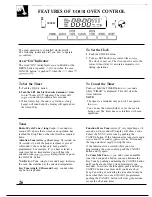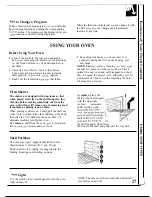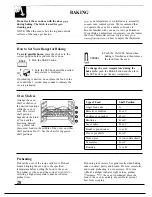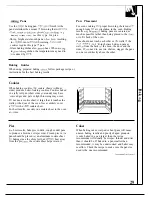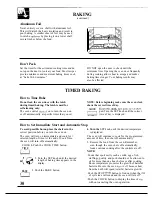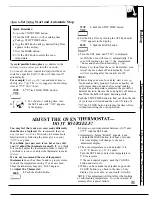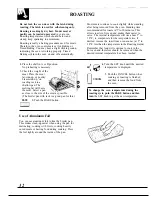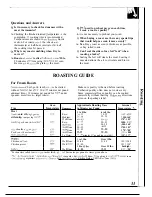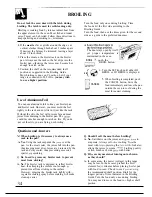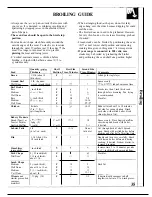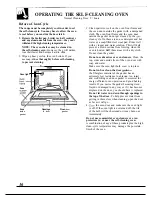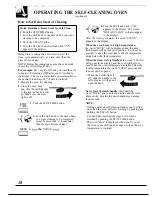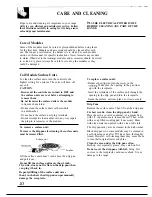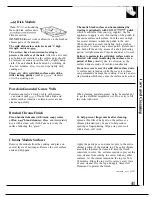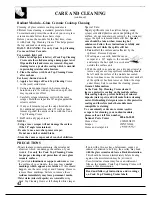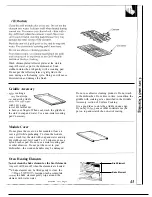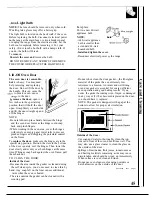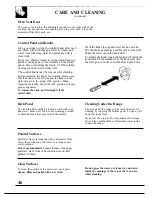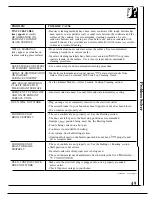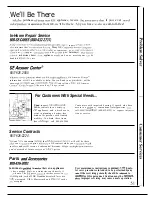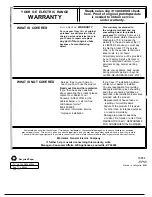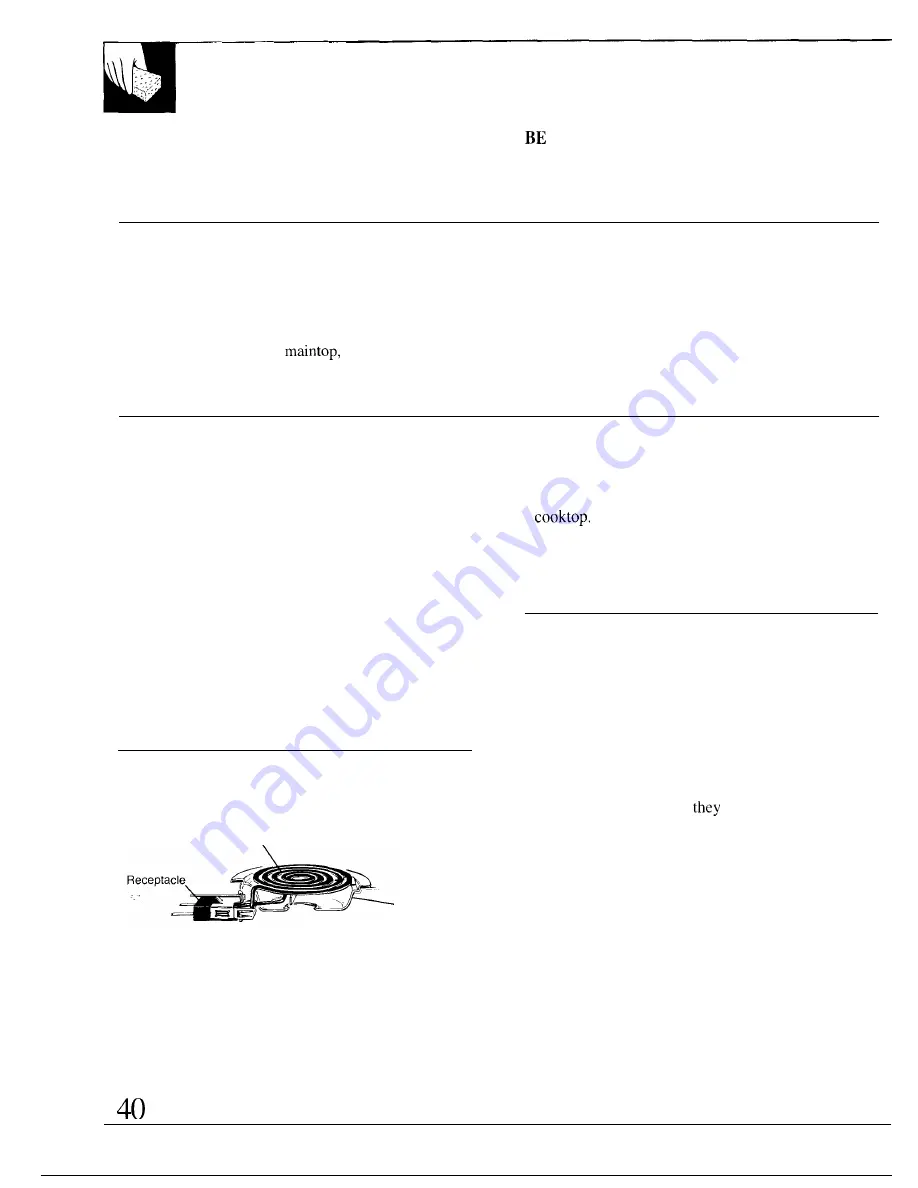
CARE AND CLEANING
Proper care and cleaning are important so your range
SURE ELECTRICAL POWER IS OFF
will give you efficient and satisfactory service. Follow
BEFORE CLEANING ANY PART OF THE
these directions carefully in caring for it to help assure
RANGE.
safe and proper maintenance.
Care of Modules
Some of the modules must be cured or preconditioned before using them
for the first time. Modules and accessories should be cleaned after each
use. The longer a soil remains, the harder it is to clean. See each module
section in this manual for specific instructions. Never immerse any module
in water. When not in the
modules and accessories should be stored
in a clean, dry place. Always be careful not to drop the modules or they
could be damaged.
Coil Module Surface Units
To clean the surface units, turn the control to the
highest setting for a minute. The coils will burn off
any soil.
CAUTION
●
Be sure all the controls are turned to OFF and
the surface units are cool before attempting to
remove them.
●
Do not immerse the surface units or the module
in liquids of any kind.
●
Do not clean the surface units or the module
in a dishwasher.
●
Do not bend the surface unit plug terminals.
●
Do not attempt to clean, adjust or in any way repair
the plug-in receptacles or the module.
To remove a surface unit:
To remove the drip pans for cleaning, the surface units
must be removed first.
Surface Unit
Drip Pan
Lift the surface unit about 1 inch above the drip pan
and pull it out.
Do not lift the surface unit more than 1 inch.
If you do, it may not lie flat on the drip pan when
you plug it back in.
Repeated lifting of the surface unit more
than 1 inch above the drip pan can permanently
damage the receptacle.
To replace a surface unit:
●
Replace the drip pan into the recess in the
Make sure the opening in the pan lines
up with the receptacle.
●
Insert the terminals of the surface unit through the
opening in the drip pan and into the receptacle.
●
Guide the surface unit into place so it rests evenly.
Drip Pans
Remove the surface units. Then lift out the drip pans.
For best results, clean the drip pans by hand.
Place them in a covered container (or a plastic bag)
with 1/4 cup ammonia to loosen the soil. Then scrub
with a soap filled scouring pad if necessary. Rinse
with clean water and polish with a clean soft cloth.
The drip pans may also be cleaned in the dishwasher.
Black drip pans (on some models) may be cleaned in
a self-cleaning oven after
have been thoroughly
rinsed. However, self-cleaning them may cause them
to lose their original luster and shine.
Clean the area under the drip pans often.
Built-up soil, especially grease, may catch on fire.
Do not cover the drip pans with foil. Using foil
so close to the receptacle could cause shock, fire or
damage to the range.

